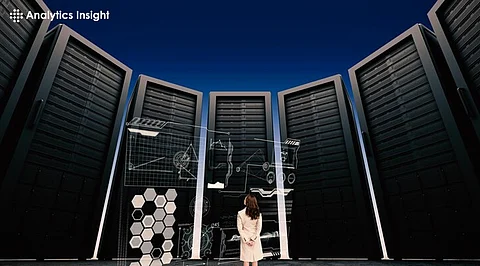

Artificial intelligence is witnessing remarkable jumps in development on every front. Whether it be health or transport, AI is changing the dynamic of how things work. However, the silent challenge amidst this progress has been phantom data centers.
A phantom data center is an underutilized facility or an otherwise inefficiently run facility that draws much energy and resources, ultimately limiting the potential of AI itself. It thus becomes important for making the future of AI sustainable and scalable.
These phantom data centers run inefficiently and are often in low utilization but consume too many resources. Such centers come with servers, networking equipment, and storage systems that are underutilized yet continue drawing power and maintaining the facilities. Even though inefficient, they contribute to waste and environmental issues because they belong to the world's data infrastructure.
AI applications require massive computing power, which can only be provided by these data centers. However, when they do not work at optimum capacity, they are no longer facilitators of progress but instead become impediments to innovation.
Phantom data centers are one of the most burning issues related to energy consumption. Data centers consume 1-2% of global electricity globally, and inefficient ones predominantly take this share. These centers have mostly old hardware and inefficient cooling systems, and do not have advanced energy management solutions.
Phantom data centers consume more energy to perform workloads like training machine learning models. Thus, such operations produce more carbon emissions, creating an obstacle for the industry to achieve sustainability. AI will grow in its environmental footprint if this issue is not addressed soon.
Phantom data centers also interfere with the scalability of AI systems. As the demand for AI applications increases, so does the demand for increased data processing capability. Inefficient data centers are ineffective in filling these demands, resulting in more delays, wastage, and a higher cost.
The correct allocation of resources is primarily important for the smooth operation of AI systems. If data centers cannot be sustained with large operations, it creates bottlenecks and limits innovation and expansion. This inefficiency can slow advancement to critical areas like healthcare diagnostics, autonomous vehicles, and predictive analytics.
Phantom data centers are costly. Organisations spend millions of dollars on energy consumption, hardware upgrades, and maintenance for facilities that do not generate the same returns. Monetary constraints remove resources from research and development, slowing technological progress.
Costs can be reduced in data centers. Energy-efficient technologies help organizations save operational costs and optimize the use of their resources. That benefits the organizations but contributes toward the bigger aim of making AI systems more accessible and sustainable.
There is a problem that needs to be addressed on multiple fronts related to phantom data centers.
Improvement in energy-efficient hardware and cooling of infrastructure is a need. Advanced power management systems, along with renewable energy sources, can minimize a data center's ecological footprint.
Virtualization technologies enable multiple applications on a much smaller number of physical servers. As such, hardware demands and energy consumption are reduced. Resource usage optimization among features of cloud computing solutions brings one known feature—scalability on demand.
AI itself can be used to make data centers efficient. Predictive analytics optimize workload distribution, minimize downtime, and enhance energy management. All these tools ensure that data centers work at peak efficiency while wasting as little as possible.
Regular audits will reveal unused resources and inefficiencies. Decommissioning old and redundant equipment will leave only productive infrastructure in the operation.
Governments and industry groups can create laws encouraging green practices in data centers. Incentives for green technology adoption will help transition to more energy-efficient operations sooner.
Phantom data centers are not only an operational necessity but also an ethical imperative. The future of artificial intelligence (AI) will shape the future as a whole, making it crucial for the infrastructure supporting AI to be sustainable.
Optimized data centers can foster innovation and lower costs by reducing negative environmental impacts, benefiting both businesses and the planet.
The journey ahead relies on collaboration among technology providers, policymakers, and various industries. Increased investments in energy-efficient infrastructure and advanced technologies can lead to a sustainable and scalable AI ecosystem. By eliminating phantom data centers, we can unlock AI's full potential, resulting in progress across various sectors and improving life for everyone.
